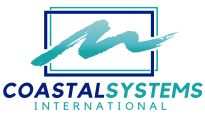Connection with the Water
Waterfront spaces are inherently about water—but not every project gets the relationship right. At Coastal Systems, we believe the magic of a waterfront comes from how people interact with the water itself. It’s not just a backdrop. It’s a living part of the experience. That’s why our designs prioritize direct, meaningful, and safe access to the shoreline, the bay, the marina, or whatever body of water defines the site. We focus on creating physical and visual connections that invite people in, foster activity, and make the water an active part of daily life.
Creating Safe and Memorable Access
True connection with the water means creating opportunities for people to safely get close. That could be as simple as a stepped seating area along a seawall or as complex as a full-service marina with multiple types of docking systems. We tailor every design to the needs of the site and its users. In recreational environments, that might include kayak launches, fishing piers, paddleboard rentals, or even designated swim zones. In urban or mixed-use settings, floating walkways or cantilevered decks allow for interaction without disturbing natural shorelines.
Safety is built into every access point we design. This includes railings, nonslip materials, clear signage, and lighting to guide movement at night. We also consider tidal fluctuations, storm surge risks, and maintenance demands so that access stays usable throughout the year. By combining engineering know-how with an understanding of user behavior, we make water access something everyone can enjoy with confidence.
Maximizing Views and Visual Continuity
Even when visitors can’t physically get into the water, we design ways for them to feel connected to it. That starts with unbroken sightlines and wide visual corridors that lead the eye toward the water. We avoid barriers—both physical and visual—so that every seat on a boardwalk, every lounge chair at a resort, or every bench along a trail frames the water as part of the story.
We also use elevation changes strategically. A modest rise in grade can create a viewing platform that makes people feel perched over the edge of the environment. Glass railings, stepped amphitheaters, and horizon-edge pools all enhance the view without distracting from it. Whether someone is walking their dog or dining al fresco, the water stays present in the background, reinforcing a sense of place.
Blending Nature and Infrastructure
One of our core goals is to design access points that feel like a natural extension of the environment. In many cases, this means merging built infrastructure with landscape features. For example, a sloped stone beach might serve as both an erosion buffer and a gathering place. A boardwalk might weave through mangroves or over marshland, providing educational value and ecosystem protection at the same time.
We also work with environmental engineers to restore natural shorelines while improving usability. In some projects, this has involved transitioning hard bulkheads into living shorelines, regrading inlets for better access, or installing low-profile jetties that double as public spaces. These hybrid solutions allow us to design spaces that support both people and habitat, blending function and sustainability.
Supporting a Range of Activities
Water connection means different things to different users. For some, it’s launching a boat. For others, it’s sipping coffee near the edge. Our designs accommodate a broad spectrum of experiences—from high-energy recreation to quiet reflection. We map activity zones to minimize conflicts and ensure that everyone can enjoy the space safely and comfortably.
We also think about transitions. Can someone walk from a restaurant to a water taxi stop? Are there shaded areas to wait near a boat dock? Is there enough space for spectators to gather during an event or regatta? These kinds of details are what elevate a good design into a great destination. Our goal is to create a seamless relationship between land and water, where each activity supports the others in a natural rhythm.
Educational and Emotional Engagement
Waterfronts are powerful teaching tools. Many of our projects include interpretive signage, marine touch tanks, underwater viewing windows, or even art installations that highlight the ecology, history, or culture of the area. These features strengthen the connection between people and place, giving the water a deeper meaning beyond its surface.
We also consider how the space feels. The sound of water lapping against pilings, the scent of salt in the air, or the cool breeze rolling off the sea—these sensory elements can shape lasting memories. Our team pays attention to how people feel in a space, not just what they do there. That emotional connection is what keeps people coming back, and what makes a waterfront truly successful.
Realizing Visions for over 30 years
